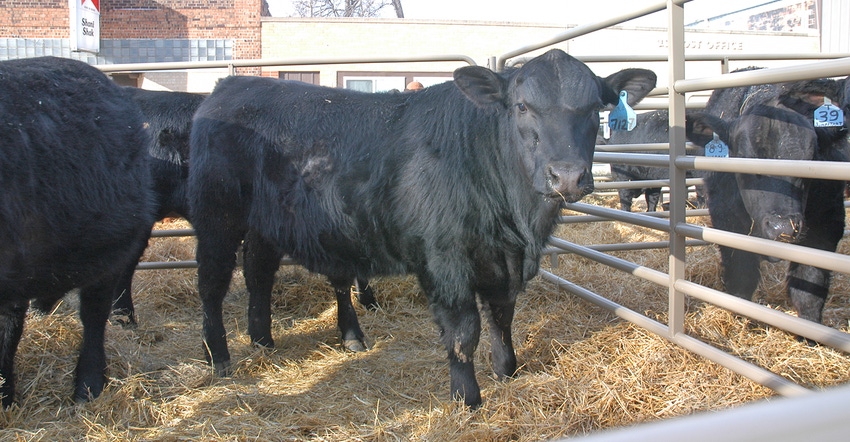January 28, 2019

Manage new bulls carefully between the time you take delivery of them and the start of breeding season. How you handle them can help or hurt your return on the investment in new genetics, says Warren Rusche, South Dakota State University Extension cow-calf field specialist.
Three things on his management checklist are:
1. Ration adjustments
In most cases, yearling bulls are developed on higher energy rations than what will be available to them during the breeding season. Therefore, simply turning young bulls out to the breeding pastures increases the likelihood of excessive weight loss and potentially a reduction in fertility and libido.
"Extreme weight loss could also impact longevity," Rusche says. "Adapting bulls to lower energy diets prevents bulls from ‘crashing’ and increases the odds of success."
Changes in rations should be made gradually. Because sperm cells mature over a 60-day period, avoid any drastic changes during the two months before the start of breeding season. The concentrate portion of the ration should be gradually reduced in a series of steps until the desired level is reached.
"It's important to remember that these bulls are still growing and to not restrict nutrient intake too much," Rusche says. "They should be gaining 1.5 to 2 pounds per day and be in a body condition score of about a 6 at the start of the breeding season."
As with any class of livestock, the necessary mineral and vitamin supplementation as well as high quality water should be provided.
2. Boot camp for bulls
You will likely use more than one bull in a breeding pasture. If the bulls have not run together previously, they will very likely spend time fighting to establish a pecking order rather than getting cows bred. Rusche suggests grouping the bulls according to their assigned breeding pasture groups prior to the start of the breeding season to allow those "social adjustments" to take place before breeding season starts.
Bulls also need to move around. Allowing for increased opportunities for exercise will help improve the bulls' physical condition and stamina levels, which should help insure their ability to remain functional throughout the breeding season.
"Additional exercise on pasture also serves to reduce the potential for feet and leg problems," he says.
3. Physical checkup
A breeding soundness exam should be conducted by a veterinarian approximately 30 to 60 days before the start of the breeding season.
It should include a physical examination of the bull, with particular emphasis on the reproductive organs, along with an evaluation of the semen and sperm cells.
Source: South Dakota State University Extension Service, which is solely responsible for the information provided and is wholly owned by the source. Informa Business Media and all its subsidiaries are not responsible for any of the content contained in this information asset.
You May Also Like




